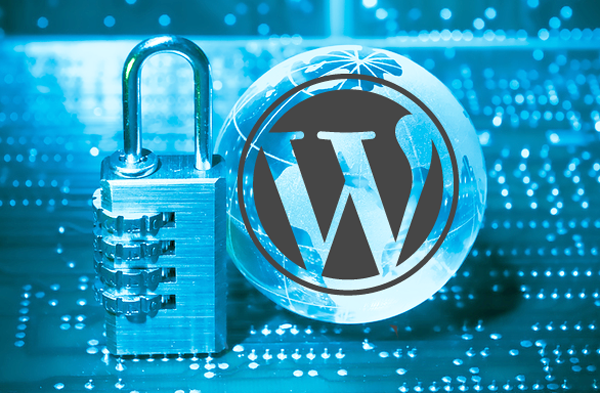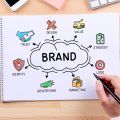- August 13, 2023
- Posted by: team SOUTECH
- Category: Blog, Blogging, Development, Graphics and Branding, Graphics and Branding Training, Others, Project Management, Technologies

Step 6: Design refinement
Title: Perfecting the Design: Refinement in Product Design
Introduction:
Design refinement is a critical step in the product design process that allows you to enhance the usability, aesthetics, and functionality of your product. In this article, we explore step six: design refinement. By iterating on your design based on user feedback and insights, you can fine-tune the details and create a polished, user-centric product.
Content:
Analysis of user feedback: Understand how to analyze and interpret user feedback collected during user testing or other feedback channels. We discuss techniques such as affinity mapping and prioritization matrices to identify common themes, pain points, and improvement opportunities.
Usability improvements: Explore strategies for enhancing the usability of your product. From streamlining workflows and simplifying interactions to improving accessibility and reducing cognitive load, we delve into usability best practices to refine your design.
Aesthetic enhancements: Learn how to refine the visual design of your product to create an appealing and cohesive user experience. We discuss principles such as color theory, typography, and visual hierarchy, as well as the importance of maintaining brand consistency.
Functional enhancements: Explore methods for enhancing the functionality of your product. We delve into techniques like feature prioritization, user story mapping, and usability testing to ensure that your product delivers the desired functionality in the most effective way.
Conclusion:
Design refinement is a continuous process of improvement and optimization. By analyzing user feedback, enhancing usability, refining aesthetics, and improving functionality, you can create a design that delights users and aligns with their needs, making it ready for the next stages of development.
Step 7: Detailed design
Title: Crossing the T’s and Dotting the I’s: Detailed Design in Product Design
Introduction:
Detailed design is the stage where your product takes shape, and all the specifications and technical details are documented. In this article, we explore step seven of the product design process: detailed design. By creating comprehensive design specifications, you provide clear instructions for manufacturing and ensure that the product is ready for production.
Content:
Design specifications: Understand the importance of detailed design specifications and documentation. We discuss the elements typically included in design specifications, such as dimensions, materials, manufacturing processes, assembly instructions, and quality standards.
CAD modeling: Learn how computer-aided design (CAD) software can help you create detailed 3D models of your product. We delve into the benefits of CAD modeling, including visualization, precise measurements, and seamless collaboration with engineers and manufacturers.
Technical considerations: Explore the technical aspects to consider during the detailed design phase. We discuss factors like material selection, tolerances, manufacturability, and regulatory requirements to ensure that your design can be successfully produced and meets all necessary standards.
Collaboration with engineers and manufacturers: Understand the importance of close collaboration with engineers and manufacturers during the detailed design phase. We explore the benefits of interdisciplinary collaboration, effective communication, and iterative refinement to achieve a design that is both functional and feasible.
Conclusion:
Detailed design is a crucial step where your product design transitions from concept to technical specifications. By creating comprehensive design documentation, collaborating with engineers and manufacturers, and considering technical aspects, you can ensure that your design is ready for production.
Step 8: Engineering and production
Title: Turning Design into Reality: Engineering and Production in Product Design
Introduction:
Engineering and production are the stages where your product design is translated into a physical or digital product. In this article, we explore step eight of the product design process: engineering and production. By working closely with engineers and manufacturers, you can refine your design, address technical challenges, and prepare for mass production.
Content:
Design validation and refinement: Understand the iterative nature of engineering and production. We discuss how engineers validate the design through analysis, simulations, and testing, identifying areas for improvement and refining the design accordingly.
Design for manufacturability: Explore the concept of design for manufacturability (DFM), where the design is optimized for efficient and cost-effective production. We delve into considerations such as material selection, production processes, assembly methods, and scalability.
Collaboration with engineers: Learn about the importance of effective collaboration with engineers throughout the engineering and production phase. We discuss methods for clear communication, problem-solving, and managing design changes to ensure a smooth transition from design to production.
Supplier selection and production planning: Understand the process of selecting suppliers and planning for production. We explore factors to consider, such as cost, quality, lead times, and logistics, to ensure a reliable and efficient production process.
Conclusion:
Engineering and production are critical stages where your design becomes a reality. By collaborating closely with engineers, optimizing the design for manufacturability, and effectively planning for production, you can set the stage for a successful manufacturing process.
Step 9: Testing and quality assurance
Title: Ensuring Excellence: Testing and Quality Assurance in Product Design
Introduction:
Testing and quality assurance play a vital role in ensuring that your product meets the required standards of quality, safety, and performance. In this article, we explore step nine of the product design process: testing and quality assurance. By conducting rigorous testing and implementing quality control measures, you can identify and address any issues before the product reaches the market.
Content:
Testing plan development: Learn how to develop a comprehensive testing plan that outlines the different types of tests, test objectives, test methods, and acceptance criteria. We discuss the importance of considering factors such as functionality, usability, durability, and safety in your testing plan.
Types of tests: Explore various types of tests commonly conducted in product design, including functional testing, usability testing, stress testing, and reliability testing. We delve into the purpose and methods of each test to ensure a thorough evaluation of your product.
Quality control measures: Understand the significance of implementing quality control measures throughout the production process. We discuss techniques such as statistical process control, quality audits, and inspection protocols to maintain consistent quality standards.
Iterative improvements: Learn how to leverage the insights gained from testing and quality assurance to drive iterative improvements. We explore the concept of continuous improvement, where feedback from testing is used to refine the design, production processes, and quality control measures.
Conclusion:
Testing and quality assurance are essential steps in product design to ensure that your product meets the highest standards of quality and performance. By developing a comprehensive testing plan, implementing quality control measures, and using test insights for iterative improvements, you can deliver a product that delights customers and builds trust in your brand.
Step 10: Launch and feedback
Title: Launching for Success: Product Launch and Customer Feedback in Product Design
Introduction:
Product launch is an exciting milestone that marks the culmination of the product design process. In this article, we explore step ten of the product design process: launch and feedback. By strategically planning your product launch, gathering customer feedback, and iterating based on market dynamics, you can maximize the success of your product.
Content:
Launch planning: Understand the importance of a well-executed product launch. We discuss considerations such as target market, marketing strategies, pricing, distribution channels, and promotional activities to create a successful launch plan.
Customer feedback channels: Explore various channels for gathering customer feedback after the product launch. We discuss methods such as surveys, customer reviews, social media monitoring, and user engagement metrics to gain valuable insights into customer satisfaction and identify areas for improvement.
Iterative improvements and updates: Learn how to leverage customer feedback to drive iterative improvements and updates to your product. We delve into the concept of continuous improvement, where customer insights are used to refine the product, enhance features, and address any issues or limitations.
Market monitoring and adaptation: Understand the importance of monitoring the market and staying informed about industry trends, competitor actions, and customer preferences. We explore strategies for adapting your product design and marketing strategies to remain competitive and meet evolving customer needs.
Conclusion:
Product launch is just the beginning of the product lifecycle. By strategically planning your launch, gathering customer feedback, and continuously iterating and adapting based on market dynamics, you can position your product for long-term success and build a strong relationship with your customers.





